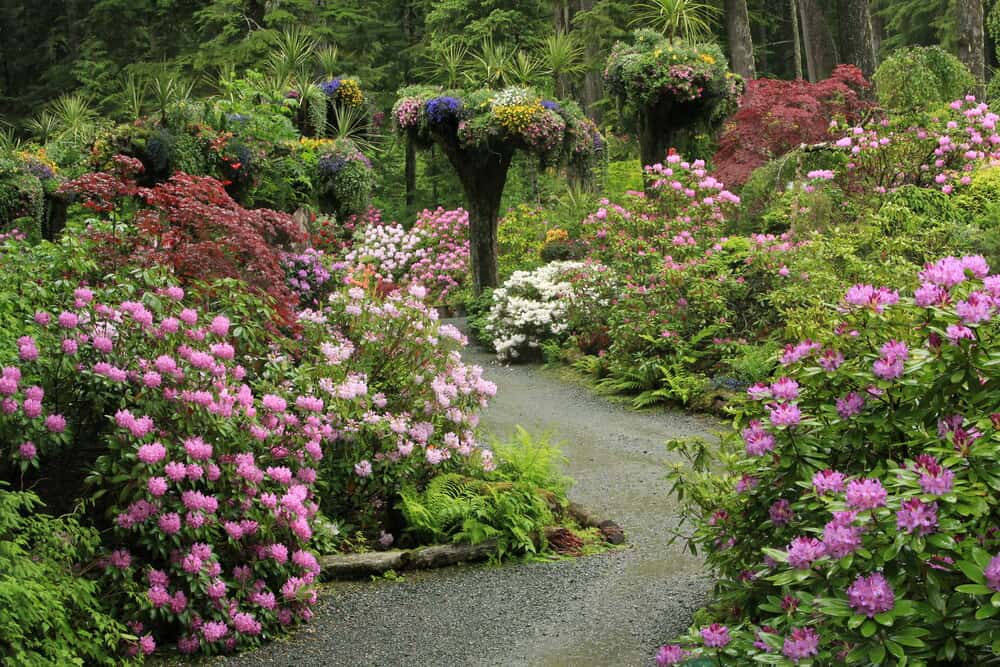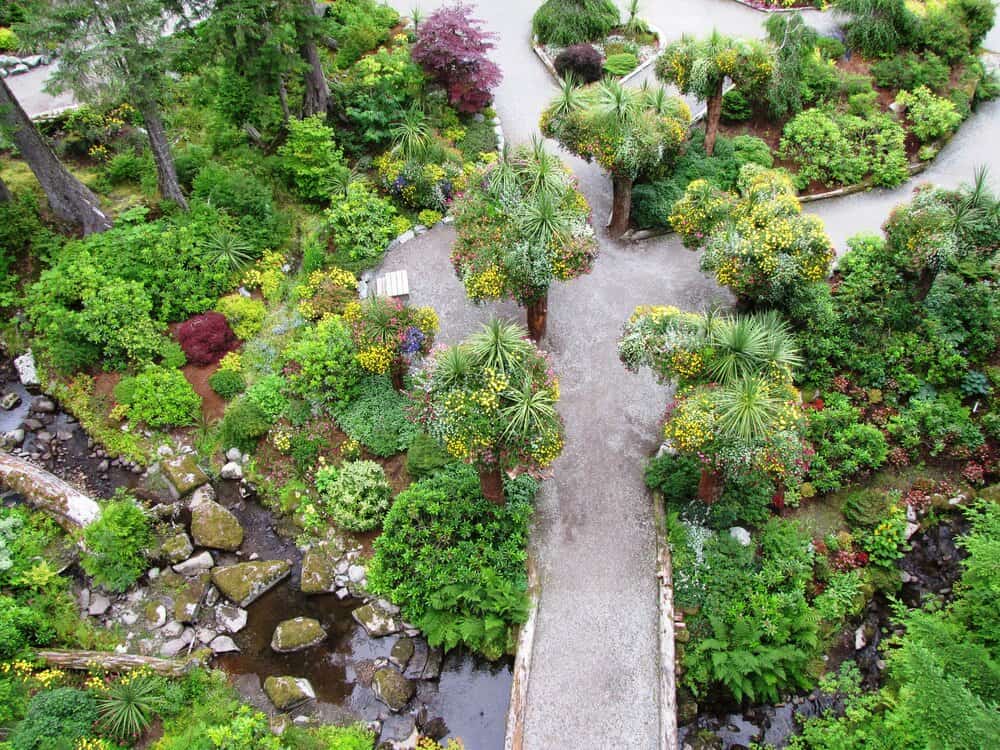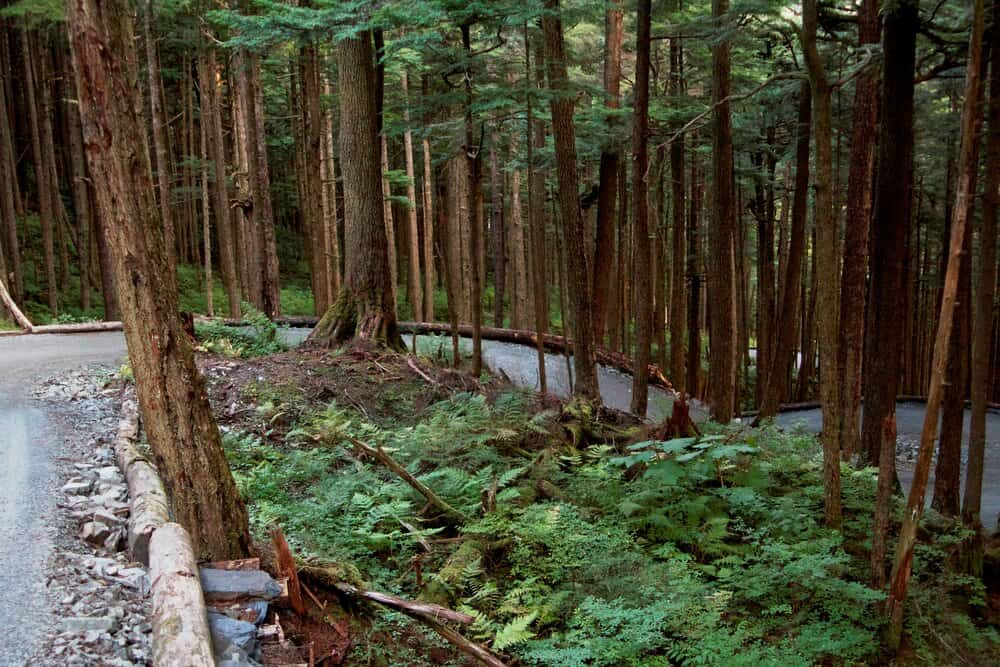The Unique Upside-Down Trees of Alaska’s Glacier Gardens
Steve and Cindy’s Alaskan Glacier rainforest garden (known as Glacier Gardens) is a classic story of making lemonade from lemons. Nature’s wrath and frustration with garden-making in the Mendenhall Valley of Alaska led to this interesting landscape.

Throughout the garden, upside-down trees, known as the ‘Flower Towers,’ have had their tops buried in the ground and their roots thrust up in the air, forming baskets that cradle brilliantly bright trailing flowers. Netting and mosses form a bed in the center of the root ball for flowers such as begonias, fuchsias, and petunias to bloom and delicately hang down from the tree.
The back story is charming. In 1984, heavy rain and snow deposits caused a landslide that demolished much of the face of Thunder Mountain, uprooting nearly everything and destroying one of the main streams. In 1985, Steve and Cindy Bowhay bought up nearly 50 acres of the destroyed land – much of it part of the Tongass National Rainforest near the Mendenhall Glacier in Alaska – intent on reclaiming it.

They wanted to use the stream for a hydroelectricity plant to power new greenhouses (Steve is in the landscape business). Settling ponds were designed throughout to slow the rate of water and erosion and provide a series of waterfalls on the Gardens property. Their plan for the rest of the land was to create a guided tour for visitors to enjoy both the beautiful landscape as well as the natural panoramic view of Juneau that the Thunder Mountain rock face cliff provides.
During the process of rebuilding the stream (so the story goes), Steve accidentally damaged the moving equipment and, in a fit of frustration, used the machine to pick up a large fallen tree stump and slam it upside down into the soft mud. The image of roots hanging down like petunia vines apparently gave him the inspiration to repeat his action, inverting over 20 other dead Spruce and Hemlock trees in order to plant 75-100 flowers in the ‘root bowls’ each year.

Glacier gardens are open to visit from May until September.






